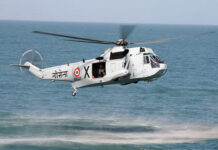The book gives a gripping, first-hand account of the author’s nine-week long stay in Kargil (during the conflict) and his experiences. He succinctly details the operation with special emphasis on the human side of the conflict. The graphic depiction of the war and candid interviews with the top brass makes for a true-to-life experience for the reader.
You will not find a better book written about the Kargil “Operations”. Written by a fauji brat, Gaurav was on the front lines with the troops. He experienced it all. This is one book that has come straight from the heart.
The narrative is very informative; the pathos, brutality, the odds facing the soldiers, the true diplomatic underpinnings behind the conflict – these are the findings in the book which the mass media had failed to bring to the masses during the course of the war.
The book covers all the aspects of the conflict. It touches the operations with the human aspects of the war. From soldiers’ love letters to the rigorous battles on the top. The details of the operation and interviews of various officers including the top brass makes it even more interesting.
At its peak, the infiltration touched nearly two brigades or 4,000-5,000 soldiers from Pakistan’s Northern Light Infantry and half that number at its lowest level towards the end of the war in July. It was brought to a close by truly awesome acts of bravery by Indian officers and jawans – and by Washington DC.
Earlier in the summer, General Malik had left on a 10-day trip to eastern Europe while Lt-General Khanna proceeded on vacation to Pune. “If the chief of a million-strong army stops going out (abroad) when a patrol goes missing or an (ammunition) dump is targeted, then I will not even be able to go to the toilet,” General Malik tells journalist Gaurav Sawant in Dateline Kargil, a lucid, albeit hagiographic account of the border war.
The initial casual attitude of the higher level officers has been brilliantly exposed. When the actual level of intrusion by the enemy troops came to light, how the Indian Army re-organized and prepared itself for the daunting task of re-capturing the peaks, has been elucidated in great details. The role of artillery in helping the infantry has been explained for general readers. The battle for every peak at Tololing, Kaksar, Khalubar, Jubar and Mushkow valley has been explained with great care and clarity. The bravery, courage, planning and fellow-feeling of the officers and soldiers have been described. The attitude of the officers towards journalists and other civilians at the initial stage is required to be noted. However, this attitude changed when the Army started gaining success. The author has also briefly mentioned the role of Air Force and Navy during the war.
The most important chapter of the book is the ‘The Lessons Learnt’. Here the author has brilliantly explained the errors of the Indian Army , how the enemy exploited the gaps between Indian defences and the recommendations of the Committee headed by Late K. Subramaniam in this regard.
The book has provided many details of the day-to-day activities during the battle. He has intimately mingled with the officers and soldiers during the war and explained their mind-set during the battle. We come to know the mind-set of the soldiers during the successes as well as during the failures.
The book is divided into forty-six chapters. These are: Those Early Days – The Initial Setbacks – Mass Exodus – The Induction of Artillery – The Tololing Assault – More Troops Move In – Yeh Dil Mange More – Victory At A Price – The Air Operations – The Early Batalik Battles – Love’s labour Lost – The Spiritual Battle – Surinder Singh At Kaksar – The Picture Improves – The Para-Operations – The Artillery Battle – Life of A Jawan – Planning For Tiger Hill – The Artillery Support – The Infantry Assault – The Counter Attack – Back To Batalik – Batalik Battles Pick Up – Soldiers Soldier On – Peak Khalubar Recaptured – Jubar Falls, India Celebrates – Operation Safed Sugar – Battle In Mushkoh Valley – Courage at Point 4875 – Bearding The Lion – The Safe Passage – The Reluctant Withdrawal – Jockeying For Heights – Pakistan’s Unkept Promise – The Siege Within – The Turtuk Trouble – The Brave Among The Enemy – The Postmortem Begins – Hack Pack At War – Families Stand By – The Naval Operations – Crisis In Command? – Friends And Foes – The Aftermath – The Lessons Learnt – Proving A Point.
Gaurav Sawant is the son of Brig Chitranjan Sawant (Retd), a well-known Army officer of Indian Army. Gaurav is an alumnus of Saint. Stephen’s College, Delhi and at the time of writing this book, he was the Principal Correspondent (Defence) with the Indian Express. He did his masters in Medieval Indian History from the Delhi University and is a Guest Lecturer at the Indian Institute of Mass Communication, New Delhi.
Dateline Kargil by Gaurav Savant
384 pages, Rs 699, 2022 edition


















